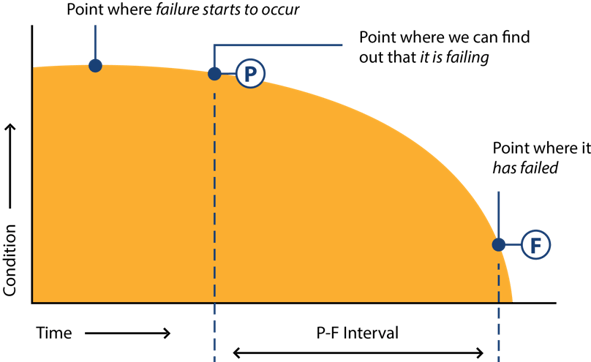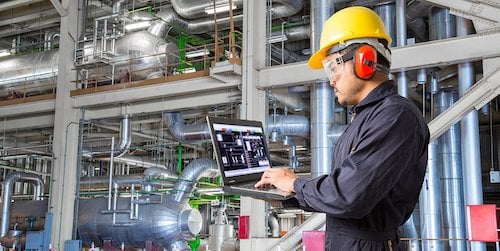Beyond the benefits of common MES tools like OEE and downtime tracking, additional efficiency can be gained in manufacturing operations through the implementation of a predictive maintenance program. Traditional maintenance programs often used time-based intervals for equipment maintenance, which usually means equipment is maintained more often than needed, resulting in unnecessary downtime and labor costs. Worse, every now and then, equipment fails before a scheduled maintenance interval, resulting in unplanned downtime and scrapped product. Instead, predictive maintenance helps determine maintenance intervals in the “Goldilocks zone”— not too early, not too late, but right when needed.
The key to developing a successful predictive maintenance program goes back to your data strategy—you need to have the right information available for the right people at the right time. If you are aware of the equipment that is not running optimally, you can address these inefficiencies before they turn into issues. This information is probably already available in plant equipment, making it relatively inexpensive to get equipment status data into the hands of maintenance teams.
Various metrics could indicate equipment issues before an actual break-down, and quite often these trends are visible to software long before an operator could notice them. Software, for example, may see that a motor temperature is beginning to slowly increase above its normal run temperature. This could be a warning sign that the motor, or whatever it is driving, is beginning to fail, and it may not even be perceptible to an operator yet. Rather than waiting for it to fail and halt production, maintenance can be performed on the motor at a time when production is least impacted.
In the graphic below, predictive maintenance would detect a pending failure at point P, giving the most opportunity for preventing failure and its impact on production. Typically, software is needed for this type of early detection. The key point is that with a predictive program, maintenance only needs to happen once this condition is detected. While a preventative maintenance program would also prevent the failure, it could require multiple, unnecessary maintenance procedures if performed too frequently. Additionally, it’s possible failures could happen between intervals causing unplanned down time.

Predictive maintenance can help detect a possible failure well before a problem occurs, saving your organization time and money.
As with all MES tools, it’s important to view a predictive maintenance initiative as a continuous improvement process. Start by putting a software platform in place and then picking a few key assets that have the most impact on production or are expensive to maintain or replace. This will have the greatest benefit, and additional assets can be added to the system over time for incremental improvement to the system.
Check out our next blog in this series, where we discuss Production Scheduling or download our 9 MES Tools Every Plant Manager Needs to Improve Business Performance white paper to examine all the best MES tools for increasing business performance.







Comments